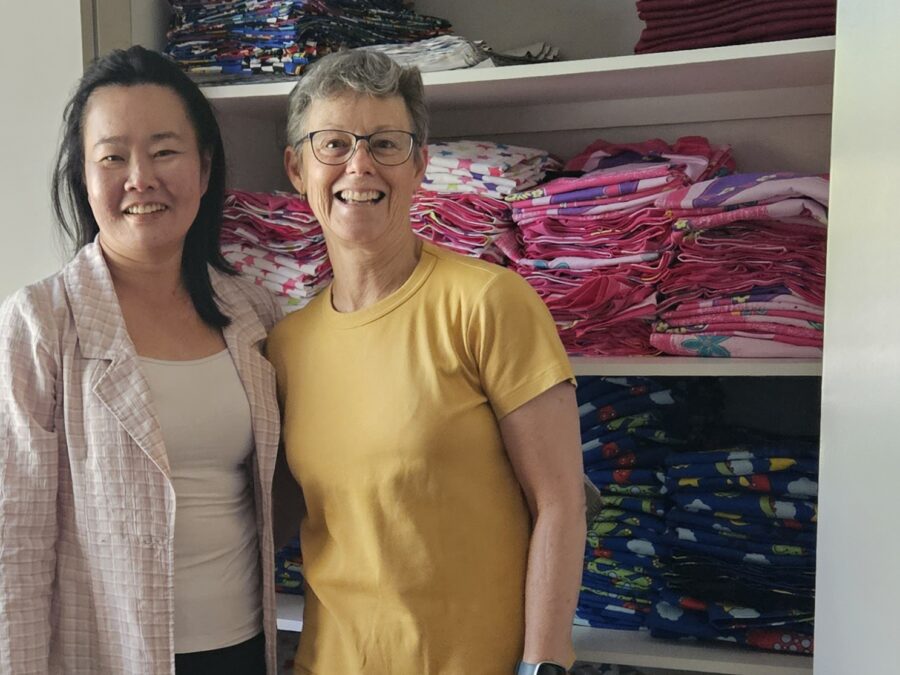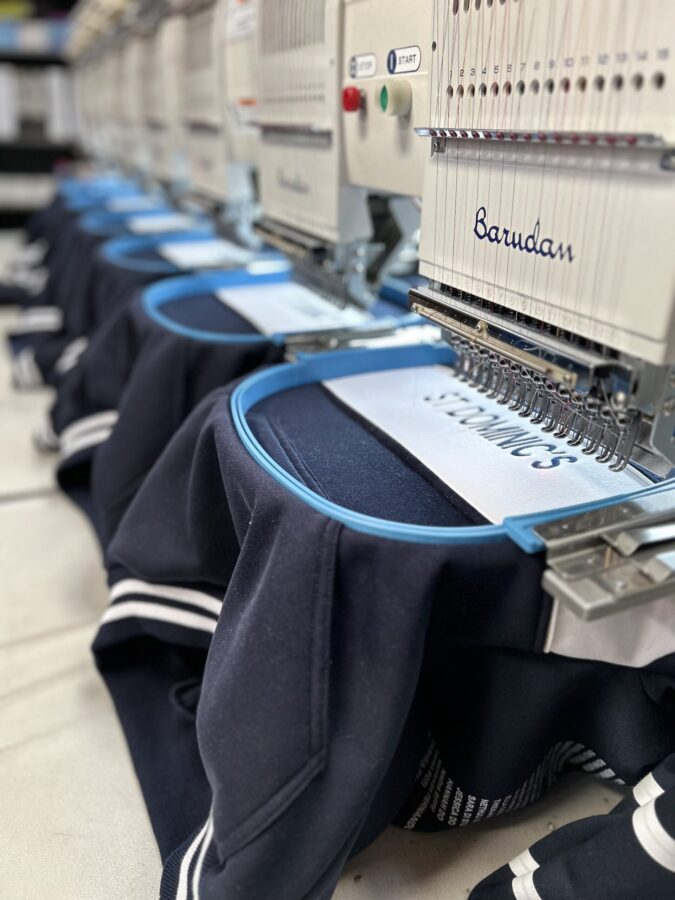Our Guide: How to Shop Ethically Made Clothes

Our Guide: How to Shop Ethically Made Clothes
When you’re trying to do the best with your dollars by investing in a well-made ethical piece of clothing and supporting a business that’s doing good in the world, it can get a bit confusing, to say the least. Fast fashion companies can boast big vague statements or have impressive goals… for 2040… but, what are they doing now? Below we share how to research brands, what questions you can ask of brands and what the Ethical Clothing Australia (ECA) trademark means. Let’s dive in!Do your research
Ethical Clothing Australia’s accreditation program creates a level playing field for the brands and manufacturers that pass an Ethical Clothing Australia audit. The audit ensures that the rights of the talented and hard-working people behind each garment are being protected – that they are receiving the correct wages, their entitlements and are working in safe conditions according to Australian workplace laws.
When understanding what makes a brand ethical, there’s a lot to consider. Here are the fundamentals that we look at in a compliance audit, which is a great place to start when researching and finding where to shop ethical fashion:
Employee wages and entitlements are met as per the Textile, Clothing, Footwear and Associated Industries Award 2020 or any other applying award.
- TCF Award 2020 (making sure workers get paid enough).
- Working conditions are occupational health and safety (OHS) inspected and Workcover insurance is available, (ensuring the space they work in is safe and that if an injury occurred then a first aid kit and other essentials are available).
- Evidence of accruals: annual and other leave has been accrued, and paid correctly, (because all workers deserve the leave they’re entitled to).
- Meeting with the workers as well as home workers, (face to face conversations with workers so they know about the audit and what it covers).
- Assessing all onshore suppliers, including any outsourced services such as embroidery or screen printing , (every step of the way, these standards need to be maintained).
As we look at the supply chain and process involved in making textile, clothing and footwear (TCF) products, we start to see how many hands have been involved and how important it is to look after each one.
If you’re short on time you can head straight to our brand directory and know you’re buying ethically with any one of our Ethical Clothing Australia accredited brands.
Ask questions of brands
How are your garment workers treated?
Everyone deserves a safe work environment, from designers to garment workers to those who dispatch your clothing. Without ethical treatment of workers, employees can be under-paid, denied bathroom breaks, meal breaks and proper care when injured or sick. When asking brands about how their workers are treated, keep them accountable and make sure that their actions count. Shopping ethically supports workers who are receiving living wages and encourages these fantastic ethical brands to continue to manufacture in Australia.
How do you ensure safe working conditions for garment workers?
A consumer asking about the working conditions of a business’s garment workers is a joy for ethical brands and simultaneously puts pressure on brands that are not up to scratch. For ethical brands, they get to proudly share all the effort they’ve put into making their working conditions safe, fair and ethical. Whereas for unethical brands, asking what the working conditions are can lead to allusive, vague answers covering up their lack of standards. For Ethical Clothing Australia, having safe working conditions for garment workers includes OHS inspection of amenities, having electricals checked from the toaster to the sewing machines, even ensuring that the workplace has a working fire extinguisher with the correct service date. These seemingly little things if overlooked can add up to a dangerous workplace. Asking these questions can increase demand for safe working conditions for all garment workers.Does the brand have a transparent supply chain?
A great first step when looking into a brand’s ethical practices is to see if they have a transparency page on their website. Transparency pages usually reflect the willingness of a brand to share information behind the scenes and about their products. Ethical brands that know and respect their garment workers will often share photos of the team and their factory because they are proud of each person behind their ethical brand and practices that go into making the clothes. If you cannot find this page, you can email the brand and ask about their transparency policy and for details about their supply chain. With more demand and consumer pressure, comes the push for brands to share what goes into their garments, leaving no room for shady practices and encourages brands to take the steps necessary to become accredited.Does the brand share ethical and sustainable goals?
This is another question you can ask. Goals and targets show that a brand is at least considering their practices. You can help to keep them accountable by asking what the smaller steps are and when you can expect certain changes to be implemented. This builds accountability and pushes them to take greater steps toward being an ethical brand as they can see their customers are voting with their dollars. Look for goals with tangible results, not just sidestepping over issues, (for example, starting a charity, while very commendable, doesn’t benefit their garment workers).How much of their clothing is manufactured in Australia?
You don’t know what you can’t see. Ethical Clothing Australia only audits brands, manufacturers and suppliers based in Australia and there are a lot of benefits to producing onshore. When clothing is produced in Australia, there’s more accountability of both the company as a whole, but also the business leaders and marketers who sell their products.
If there’s unethical manufacturing occurring, it can’t be blamed on being “out of sight”. There are also greater benefits to local production like keeping the valuable skills of sewing and pattern making alive locally, supporting local manufacturing and jobs and greater collaboration between Australian businesses.
Ethical Clothing Australia’s Certification Trade Mark
Our accreditation makes it easy when shopping ethically. When you see a brand who displays the Ethical Clothing Australia trade mark, you know that brand values ethical production and treats their workers fairly in line with Australian law. Our accreditation is renewed each year, so you know the standard will not change.What does Ethical Clothing Australia’s accreditation mean for garment workers?
An Ethical Clothing Australia accreditation means the brand has met all the criteria in the compliance audit. It means everyone in the entire supply chain from designers to garment workers and all the way to dispatch are getting paid fairly, both in their wages, their super and their leave entitlements. It means having the correct breaks, working safe workplaces with kind treatment. It means your garments are made with love.
Why you can trust an Ethical Clothing Australia accreditation
An accredited business must undertake an annual renewal process. This ensures the standards and practices are in place and stay up to date according to a range of Australian workplace laws. Ethical Clothing Australia’s compliance team audits each step of production, so that every supplier and manufacturer involved in the creation of a garment is included. This means your ethical purchase is a vote in support of the many hands involved in the creation of the garment.
How to identify Ethical Clothing Australia accredited brands
You can find accredited brands in our brand directory. Ethical brands with Ethical Clothing Australia certification are able to display the certification trade mark on their website and garment swing tags. Make sure to keep an eye out! If you are un sure you can always search for a brand on our website.Ethical Clothing Australia exists to protect the lives of Australian garment workers
Ethical Clothing Australia was created to protect garment workers and to make it as easy as possible for shoppers to find and support ethical brands. Our accreditation sets a standard for brands, manufacturers and value-adding businesses seeking to manufacture ethically and locally.
Find Ethical Clothing Australia accredited brands in our brand directory or you can find out more about accreditation here.
Related articles
Explore more insights, updates and stories from across Australia’s ethical and local manufacturing industry.










